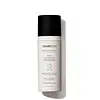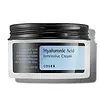What's inside
What's inside
 Key Ingredients
Key Ingredients

 Benefits
Benefits

 Concerns
Concerns

 Ingredients Side-by-side
Ingredients Side-by-side

Butyl Methoxydibenzoylmethane 3%
UV AbsorberOctocrylene 2.75%
UV AbsorberEthylhexyl Salicylate 5%
UV AbsorberWater
Skin ConditioningButyloctyl Salicylate
Skin ConditioningGlycerin
HumectantHelianthus Annuus Seed Oil
EmollientDimethicone
EmollientZea Mays Oil
EmulsifyingPolyester-8
Skin ConditioningCoco-Caprylate/Caprate
EmollientPolysilicone-15
UV FilterSodium Stearoyl Glutamate
CleansingPanthenol
Skin ConditioningVitis Vinifera Callus Culture Extract
Sodium Ascorbyl Phosphate
AntioxidantCamellia Sinensis Leaf Extract
AntimicrobialAloe Barbadensis Leaf Extract
EmollientCaffeine
Skin ConditioningProline
Skin ConditioningPhytosphingosine
Skin ConditioningCeramide AP
Skin ConditioningCeramide EOP
Skin ConditioningCeramide NP
Skin ConditioningSodium Hyaluronate
HumectantAllantoin
Skin ConditioningChamomilla Recutita Extract
Skin ConditioningNiacinamide
SmoothingTremella Fuciformis Extract
HumectantMacadamia Integrifolia Seed Oil
Skin ConditioningOlea Europaea Fruit Oil
MaskingRosa Moschata Seed Oil
EmollientLavandula Angustifolia Oil
MaskingDiatomaceous Earth
AbrasiveLaminaria Digitata Extract
Skin ProtectingFerric Hexapeptide-35
Skin ConditioningMelaleuca Alternifolia Leaf Oil
AntioxidantCaprylic/Capric Triglyceride
MaskingCaprylyl Glycol
EmollientSodium Polyacrylate
AbsorbentSesamum Indicum Seed Oil
EmollientRosmarinus Officinalis Leaf Extract
AntimicrobialTeprenone
Skin ConditioningLecithin
EmollientMica
Cosmetic ColorantSorbitol
HumectantAcrylates/C10-30 Alkyl Acrylate Crosspolymer
Emulsion StabilisingCaprylhydroxamic Acid
Ethylhexylglycerin
Skin ConditioningCholesterol
EmollientCarbomer
Emulsion StabilisingXanthan Gum
EmulsifyingSodium Lauroyl Lactylate
EmulsifyingSodium Hydroxide
BufferingTbhq
AntioxidantPhenylpropanol
MaskingCI 77891
Cosmetic ColorantButyl Methoxydibenzoylmethane 3%, Octocrylene 2.75%, Ethylhexyl Salicylate 5%, Water, Butyloctyl Salicylate, Glycerin, Helianthus Annuus Seed Oil, Dimethicone, Zea Mays Oil, Polyester-8, Coco-Caprylate/Caprate, Polysilicone-15, Sodium Stearoyl Glutamate, Panthenol, Vitis Vinifera Callus Culture Extract, Sodium Ascorbyl Phosphate, Camellia Sinensis Leaf Extract, Aloe Barbadensis Leaf Extract, Caffeine, Proline, Phytosphingosine, Ceramide AP, Ceramide EOP, Ceramide NP, Sodium Hyaluronate, Allantoin, Chamomilla Recutita Extract, Niacinamide, Tremella Fuciformis Extract, Macadamia Integrifolia Seed Oil, Olea Europaea Fruit Oil, Rosa Moschata Seed Oil, Lavandula Angustifolia Oil, Diatomaceous Earth, Laminaria Digitata Extract, Ferric Hexapeptide-35, Melaleuca Alternifolia Leaf Oil, Caprylic/Capric Triglyceride, Caprylyl Glycol, Sodium Polyacrylate, Sesamum Indicum Seed Oil, Rosmarinus Officinalis Leaf Extract, Teprenone, Lecithin, Mica, Sorbitol, Acrylates/C10-30 Alkyl Acrylate Crosspolymer, Caprylhydroxamic Acid, Ethylhexylglycerin, Cholesterol, Carbomer, Xanthan Gum, Sodium Lauroyl Lactylate, Sodium Hydroxide, Tbhq, Phenylpropanol, CI 77891
Hippophae Rhamnoides Water
MaskingGlycerin
HumectantButylene Glycol
HumectantCaprylic/Capric Triglyceride
MaskingBetaine
HumectantHelianthus Annuus Seed Oil
EmollientCetearyl Alcohol
EmollientCetearyl Olivate
Sorbitan Olivate
EmulsifyingMacadamia Ternifolia Seed Oil
Emollient1,2-Hexanediol
Skin ConditioningSodium Hyaluronate
HumectantArginine
MaskingPanthenol
Skin ConditioningDimethicone
EmollientEthylhexylglycerin
Skin ConditioningCarbomer
Emulsion StabilisingAllantoin
Skin ConditioningXanthan Gum
EmulsifyingHippophae Rhamnoides Water, Glycerin, Butylene Glycol, Caprylic/Capric Triglyceride, Betaine, Helianthus Annuus Seed Oil, Cetearyl Alcohol, Cetearyl Olivate, Sorbitan Olivate, Macadamia Ternifolia Seed Oil, 1,2-Hexanediol, Sodium Hyaluronate, Arginine, Panthenol, Dimethicone, Ethylhexylglycerin, Carbomer, Allantoin, Xanthan Gum
 Reviews
Reviews

Ingredients Explained
These ingredients are found in both products.
Ingredients higher up in an ingredient list are typically present in a larger amount.
Allantoin is a soothing ingredient known for its protective and moisturizingg properties. Because of this, it is often added to products with strong active ingredients.
Studies show higher concentrations of this ingredient can promote wound healing.
Though it can be derived from the comfrey plant, allantoin is produced synthetically for cosmetic products to ensure purity.
Learn more about AllantoinThis ingredient is an emollient, solvent, and texture enhancer. It is considered a skin-softener by helping the skin prevent moisture loss.
It helps thicken a product's formula and makes it easier to spread by dissolving clumping compounds.
Caprylic Triglyceride is made by combining glycerin with coconut oil, forming a clear liquid.
While there is an assumption Caprylic Triglyceride can clog pores due to it being derived from coconut oil, there is no research supporting this.
Learn more about Caprylic/Capric TriglycerideCarbomer is a polymer of acrylic acid. Its main role is to create a gel consistency.
A high amount of carbomer can cause pilling or balling up of products. Don't worry, most products contain 1% or less of carbomer.
Dimethicone is a type of synthetic silicone created from natural materials such as quartz.
What it does:
Dimethicone comes in different viscosities:
Depending on the viscosity, dimethicone has different properties.
Ingredients lists don't always show which type is used, so we recommend reaching out to the brand if you have questions about the viscosity.
This ingredient is unlikely to cause irritation because it does not get absorbed into skin. However, people with silicone allergies should be careful about using this ingredient.
Note: Dimethicone may contribute to pilling. This is because it is not oil or water soluble, so pilling may occur when layered with products. When mixed with heavy oils in a formula, the outcome is also quite greasy.
Learn more about DimethiconeEthylhexylglycerin (we can't pronounce this either) is commonly used as a preservative and skin softener. It is derived from glyceryl.
You might see Ethylhexylglycerin often paired with other preservatives such as phenoxyethanol. Ethylhexylglycerin has been found to increase the effectiveness of these other preservatives.
Glycerin is already naturally found in your skin. It helps moisturize and protect your skin.
A study from 2016 found glycerin to be more effective as a humectant than AHAs and hyaluronic acid.
As a humectant, it helps the skin stay hydrated by pulling moisture to your skin. The low molecular weight of glycerin allows it to pull moisture into the deeper layers of your skin.
Hydrated skin improves your skin barrier; Your skin barrier helps protect against irritants and bacteria.
Glycerin has also been found to have antimicrobial and antiviral properties. Due to these properties, glycerin is often used in wound and burn treatments.
In cosmetics, glycerin is usually derived from plants such as soybean or palm. However, it can also be sourced from animals, such as tallow or animal fat.
This ingredient is organic, colorless, odorless, and non-toxic.
Glycerin is the name for this ingredient in American English. British English uses Glycerol/Glycerine.
Learn more about GlycerinHelianthus Annuus Seed Oil is the oil derived from the seeds of a Sunflower. Sunflower seed oil is non-fragrant. It is an emollient, meaning it helps to soften the skin.
Sunflower seed oil contains many fatty acids. The fatty acids found in sunflower seeds include (from highest amount to least): linoleic acid, myristic acid, palmitic acid, stearic acid, arachidic acid, oleic acid, and linolenic acid.
These fatty acids help the skin create ceramides. Ceramides play a role in repairing the skin barrier.
Helianthus Annuus Seed Oil helps moisturize the skin. This in turn helps the skin look more rejuvenated and smoother.
Sunflowers are rich in vitamin E.
Historians believe Indigenous cultures of North America domesticated sunflowers before corn. Thus they relied on sunflower oil for a variety of uses. One such use is moisturizing skin and hair.
Sunflower seed oil may not be fungal acne safe. We recommend speaking with a professional if you have any concerns.
Learn more about Helianthus Annuus Seed OilPanthenol is a common ingredient that helps hydrate and soothe the skin. It is found naturally in our skin and hair.
There are two forms of panthenol: D and L.
D-panthenol is also known as dexpanthenol. Most cosmetics use dexpanthenol or a mixture of D and L-panthenol.
Panthenol is famous due to its ability to go deeper into the skin's layers. Using this ingredient has numerous pros (and no cons):
Like hyaluronic acid, panthenol is a humectant. Humectants are able to bind and hold large amounts of water to keep skin hydrated.
This ingredient works well for wound healing. It works by increasing tissue in the wound and helps close open wounds.
Once oxidized, panthenol converts to pantothenic acid. Panthothenic acid is found in all living cells.
This ingredient is also referred to as pro-vitamin B5.
Learn more about PanthenolSodium Hyaluronate is hyaluronic acid's salt form. It is commonly derived from the sodium salt of hyaluronic acid.
Like hyaluronic acid, it is great at holding water and acts as a humectant. This makes it a great skin hydrating ingredient.
Sodium Hyaluronate is naturally occurring in our bodies and is mostly found in eye fluid and joints.
These are some other common types of Hyaluronic Acid:
Learn more about Sodium HyaluronateXanthan gum is used as a stabilizer and thickener within cosmetic products. It helps give products a sticky, thick feeling - preventing them from being too runny.
On the technical side of things, xanthan gum is a polysaccharide - a combination consisting of multiple sugar molecules bonded together.
Xanthan gum is a pretty common and great ingredient. It is a natural, non-toxic, non-irritating ingredient that is also commonly used in food products.
Learn more about Xanthan Gum